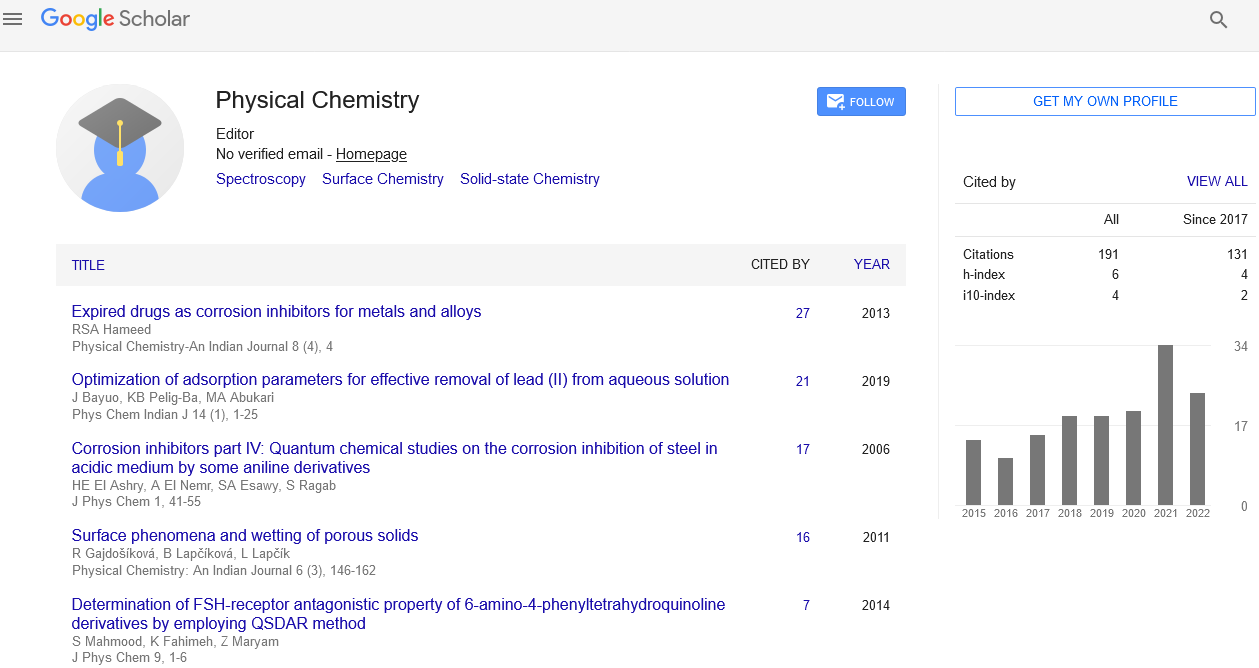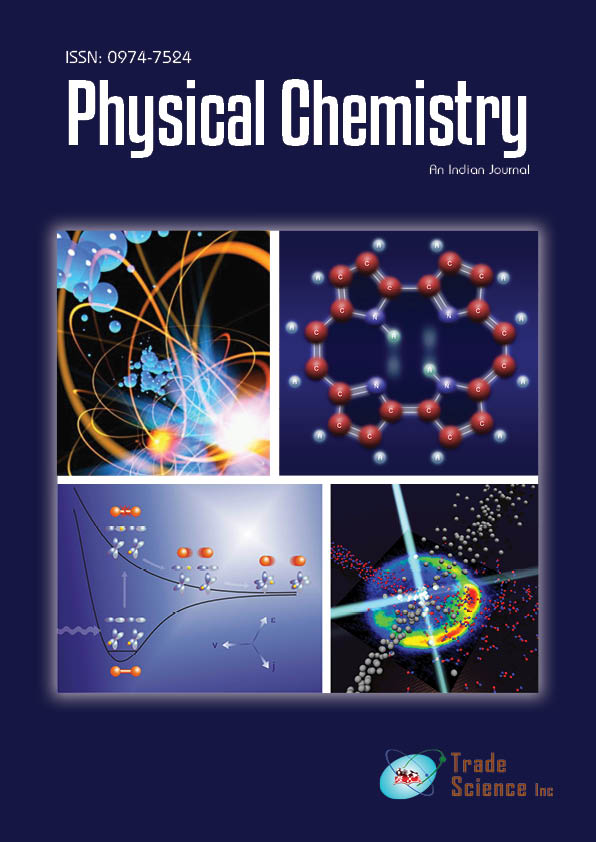Editorial
, Volume: 17( 1)Aspects of Spectroscopy Bioanalysis Procedures on a Technical Level
Ellie Wong *
- *Correspondence:
- Ellie Wong
Editorial Office,
Physcal Chemstry: An Indian Journal,
United Kingdom,
E-mail: physicalchem@journalres.com
Received: January 09, 2022; Accepted: January 23, 2022; Published: January 30, 2022
Citation: Wong E. Aspects of spectroscopy Bioanalysis Procedures on a Technical Level. Int J Chem Sci 2022;17(1):165
Abstract
Introduction
This Policy Document focuses on the technical aspects of using inductively coupled plasma (ICP) techniques to measure pharmaceutically produced inorganic elements in bio matrices in support of GLP nonclinical and clinical research. ICP has been utilized in support of Environmental Protection Agency analyses for decades, and it has only lately been introduced to the pharmaceutical business. Current bioanalytical method validation and sample analysis regulatory advice applies to chromatographic platforms used for PK and TK analyses of big and small molecules, however it does not apply to all features of various ICP approaches. Inorganic elements in pharmaceutical substances and bio matrices are increasingly being quantified using quadrupole and high-resolution ICP–MS methods of investigation. Many endogenous elements occur in biometrics, impacting the estimation of blanks and standard deviation curve samples, QC samples, and selecting suitable levels for the LLOQ are all part of the process [1].
This White Paper describes and analyses the use of elemental bioanalytical inductively coupled plasma (ICP) techniques for quantifying pharmaceutically generated elements in biological matrices. Here are some guidelines for ICP best practices, as well as comparisons to mainstream chromatographic and immunochemical bioanalysis. Definitions are also supplied for use in ICP bioanalysis applications in nonclinical and clinical studies. Optional acceptability criteria for ICP techniques in method validation and sample analysis for endogenous elemental analyses will be discussed in this study [2]. We anticipate that the first discussion given by this White Paper will contribute in the development of scientifically sound best practices for ICP techniques used in nonclinical and clinical research. Flame and carbon furnace atomic absorption spectroscopy, ICP– MS, ICP–optical emission spectrometry (ICP–OES; also known as ICP–atomic emission spectrometry [ICP–AES]), and ICP–MS/MS have all been used for element analysis. ICP–MS, ICP–OES, and ICP–MS/MS are sensitive instruments with large linear calibration ranges that allow for simultaneous multi-element measurement.
ICP Guidelines
Typical chromatographic platforms used for pharmacokinetic (PK) and toxic kinetic (TK) assessments for nonclinical and clinical investigations under GLP predicate guidelines are the subject of current bioanalytical technique validation and sample analysis regulatory guidance and industry viewpoint publications. The majority of these guidelines apply to ICPbased analysis; however, there are a few exceptions that must be taken into mind. There have been only sporadic attempts to synchronise the strategy for these unique considerations [3].
For numerous reasons, the present guideline documents are not immediately applicable to all elements of ICP bioanalytical procedures. For starters, many laboratories lack ICP subject matter specialists, making it difficult to define crucial technique features and parameters for instrument optimization. Second, because numerous elements occur endogenously in bio matrices, the quantification limit must be carefully examined prior to method validation [4]. Finally, words such as controls, blanks, standards, and specialized protocols for ICP techniques have their origins in environmental applications; however, these terms must be defined in light of current bioanalytical practices.
Uses in Pharmacology
In nonclinical and clinical studies, as well as forensic investigations, ICP–MS and ICP–OES methods of analysis are increasingly being employed to assess the quantity of components included in pharmaceutical substances and excipients. Method validation for elements in bio matrices such as whole blood, serum, plasma, CSF, urine, milk, bone, and homogenization organs and tissues can be performed according to GLP predicate rules and immunoassay guidance’s, as long as the amount of endogenous element in the matrix is determined during method development and properly accounted for during method validation.
Along the lines of molecular analysis and physicochemical-based technologies, ICP–MS is a potent tool for elemental analysis that offers a unique combination when hyphenated with other separation techniques [5]. This combination of a separation process and an elemental detector allows pharmaceutical research and development to investigate the metabolism of experimental substances based on the presence of specific elements in the molecule. This application gives complementary data to regularly used LC–MS/MS and, in some circumstances; it provides the only possible data when LC–MS/MS fails to detect highly abundant metabolites with low activation efficiency. The programme can also be used to separate molecules that contain the element of interest from endogenous molecules that have the same element. These hyphenated ICP–MS procedures are beyond the scope of this White Paper, yet they largely conform to current bioanalytical recommendations [6].
Options for equipment
ICP systems are currently available in two varieties: ICP–OES and ICP–MS (each with its own sub varieties). The equipment is chosen without regard to whether or not it will be used for bioanalysis. It's more about the matrix, potential interferences, the element of choice, and the analytical range that's being targeted. The sample introduction system and plasma of ICP–OES and ICP–MS are essentially the same. The optical spectrum is viewed and measured sequentially or concurrently in ICP– OES, with a typical range of 165 to 800 nm. For high quantities of elements, simultaneous ICP–OES is faster, but it is more expensive than sequential ICP–OES. The price is heavily influenced by the quantity of components and concentrations required. Several ICP–OES spectrometers have lately been able to determine Cl at the primary wavelength of 134.664 nm with sub-ppm detection limits; the wavelength must exceed 120 nm [7]. The invention of triple quadrupole ICP–MS in 2012, which enabled ICP–MS/MS, was the most recent advancement in the ICP–MS sector. The technology uses reaction cell chemistry to reduce spectrum interferences and improve accuracy, which is very useful in complex sample matrices. By extracting the product ions from the collision cell Q2 into Q3 and detecting them, selected ions from Q1 are employed to add additional orthogonal selectivity.
An ICP system must be sensitive enough to distinguish components of interest from matrix-induced interference or other non-interesting elements that may be present in the sample (non-spectroscopic and spectroscopic interferences) [8]. The element of interest in bioanalytical investigations could be an intrinsic component of the active pharmaceutical ingredient or an intended component of the excipient/vehicle formulation that was employed during the active pharmaceutical ingredient's administration. If the ICP instrument is working correctly during the installation phase, daily set up, evaluation following maintenance, and routine use, each manufacturer has specified specifications for operation. Because they are developed for a new instrument, the manufacturers specified instrument parameters are not usually satisfied during real use. For example, as the slit wears down after extended use on high-resolution (HR) ICP–MS, the resolution in each mode declines [9]. As a result, the internal SOP for instrument operation should take into account the instrument's realistic requirements for satisfying the performance standards. Most ICP instruments use highly pure, traceable, certified multi-element reference standard materials from or traceable to the National Institute of Standards and Technology to fully automate the tuning of all or most setup parameters. ICP–MS calibration standards, mass calibration standards, optimization solutions, and plasma setup solutions, for example, are all utilized on a regular basis. Additionally, each analytical technique should include sufficient blanks and QC samples to ensure that the established method parameters are being followed.
Collision mode (with an inert cell gas such as helium) is the most widely used approach to removing matrix-derived ionic compound interferences from multiple analyses in a single consistent mode of operation in some ICP–MS systems, with collision mode (with an inert cell gas such as helium) being the most widely used approach to removing matrix-derived polyatomic interferences from multiple analyses in a single consistent mode of operation [10]. To reduce interferences, certain ICP–MS systems include a magnetic sector and various resolution modes. ICP–MS/MS has the added benefit of decreasing polyatomic interferences when used in conjunction with MS/MS. The use of such instruments may be able to resolve matrix effects induced by matrix component signal augmentation.
Test and measurement limits
For most elements, ICP–MS yields lower detection limits (usually parts-per-trillion), whereas ICP–OES yields detection limits in the parts-per-billion range. Isobaric or polyatomic interferences can occur in ICP–MS systems, which can usually be resolved by employing HR ICP–MS, ICP–MS/MS, or quadrupole ICP–MS with collision cell and/or reaction cell technology. The solvents, acids, and other reagents used during sample preparation can cause some background effects. As a result, ultra-pure reagents are highly recommended for low-level quantitation, depending on the expected analyse concentration range in samples [11].
The Instrument Detection Limit (IDL) differs from the Method Detection Limit (MDL). The IDL is determined by the instrument's capability. The IDL will be consistent with the operator handbook parameters if the instrument is operated under optimal conditions and with synthetic, high-purity blanks (rather than real sample or matrix-matched blanks). Elements in biometrics must be analyzed with sensitivity, precision, accuracy, and speed. No spectral interferences can be caused by matrix-related enhancement or suppression, resulting in over- or under-detection of the target element [12]. Current environmental ICP techniques, trace metal impurity techniques, and classic LC–MS/MS techniques are not directly applicable to quantifying active pharmaceutical components in bioanalytical samples that contain heavy metals. In order to effectively accommodate the intricacies of sample preparation procedures, which are required for ICP techniques for bioanalytical samples containing heavy metals as an integral component of the active pharmaceutical ingredient, new bioanalytical GLP advice must be implemented [13].

